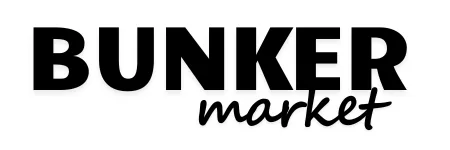On Friday, April 4, 2025, oil prices took a sharp dip, falling by 7%. This steep decline has created ripples across the global market, including the bunker industry, which is now grappling with unpredictable fuel prices. The downturn in oil prices has prompted concerns among ship operators and bunker suppliers about future pricing trends and the stability of the market. With crude oil prices remaining volatile amid growing global tensions, the bunker market is entering a period of uncertainty, leaving stakeholders to navigate potential price fluctuations and supply chain disruptions.
Rising Tensions Prompt Tariffs on U.S. Goods
One of the key factors driving the sharp drop in oil prices is the announcement of new tariffs by China, a major global economy on U.S. imports, set to take effect on April 10. This decision comes as a direct response to recent tariff hikes imposed by the U.S. The new tariffs, which will increase duties on U.S. goods by 34%, are contributing to a growing economic standoff between two of the world’s largest economies.
As these tensions escalate, there are concerns about the broader economic impact, especially regarding global demand for oil. A slowdown in economic activity, driven by these trade disputes, could result in lower consumption of crude oil and refined products, which would, in turn, have a significant effect on the bunker market. With shipping companies facing a precarious situation, the potential for rising costs and further uncertainty looms large.
Bunker Market Faces Volatility as Oil Prices Decline
The immediate effect of the escalating trade tensions is a dramatic drop in oil prices. Brent crude futures fell by $4.85, or 7%, bringing the price to $65.45 per barrel, while U.S. West Texas Intermediate (WTI) crude dropped by $4.90, or 8%, to $62.25. These price declines are expected to have a far-reaching impact on the energy sector, including the bunker market.
For companies in the shipping industry, this volatile price environment creates difficulties in budgeting and managing fuel costs. With bunker fuel prices fluctuating significantly, shipping companies are left with limited foresight into future costs, complicating their fuel procurement strategies. This uncertainty makes it more challenging for operators to plan ahead and maintain cost-effective operations, as the risk of both price declines and price increases remains high.
OPEC+ Production Plans Add Further Uncertainty to the Bunker Market
To complicate matters further, the Organization of the Petroleum Exporting Countries (OPEC) and its allies have made a move to increase oil production starting in May. The group has decided to boost output by 400,000 barrels per day, up from an earlier planned increase of just 130,000 barrels per day.
While this increase in supply could help stabilize prices in the short term, it also adds to the uncertainty in the market. For the bunker industry, the timing of this decision is crucial. On one hand, increased supply might ease some of the pressure on prices. On the other hand, the combination of rising production and ongoing geopolitical tensions could exacerbate volatility, leading to even more unpredictable fluctuations in bunker fuel prices and complicating long-term planning for both fuel suppliers and shipping companies.
Revised Oil Price Forecasts Signal Continued Market Uncertainty
As the global situation evolves, leading financial institutions have adjusted their oil price forecasts. One prominent bank has revised its December 2025 targets for Brent and WTI crude down by $4 each, bringing their projections to $65 and $61 per barrel, respectively. The revision is based on concerns over the potential for a global recession and the likelihood of further increases in oil supply.
For the bunker market, these lowered price forecasts signal that volatility is likely to continue. Shipping companies and bunker suppliers will need to remain flexible and adaptable, as both the global economic climate and oil supply dynamics remain highly unpredictable. Fuel costs are expected to remain unstable, and companies will need to adjust their strategies to navigate this uncertain terrain.
Looking Ahead: A Rocky Road for the Bunker Market
The bunker market is facing a challenging period as it deals with fluctuating oil prices and increasing uncertainty. For ship operators, managing fuel costs will be a critical component of maintaining profitability in a market that could continue to shift rapidly. Bunker suppliers will also need to stay agile, adjusting their pricing and procurement strategies to reflect changing market conditions.
As we move through the coming months, the global bunker market will have to adapt to the shifting dynamics of oil supply, demand, and geopolitical tensions. While there may be opportunities to take advantage of short-term price declines, the broader economic and political factors at play suggest that the market will remain volatile. To weather these uncertainties, both bunker suppliers and shipping companies will need to stay informed, remain flexible, and be prepared for continued fluctuations in fuel prices.
Source Bunker Market

